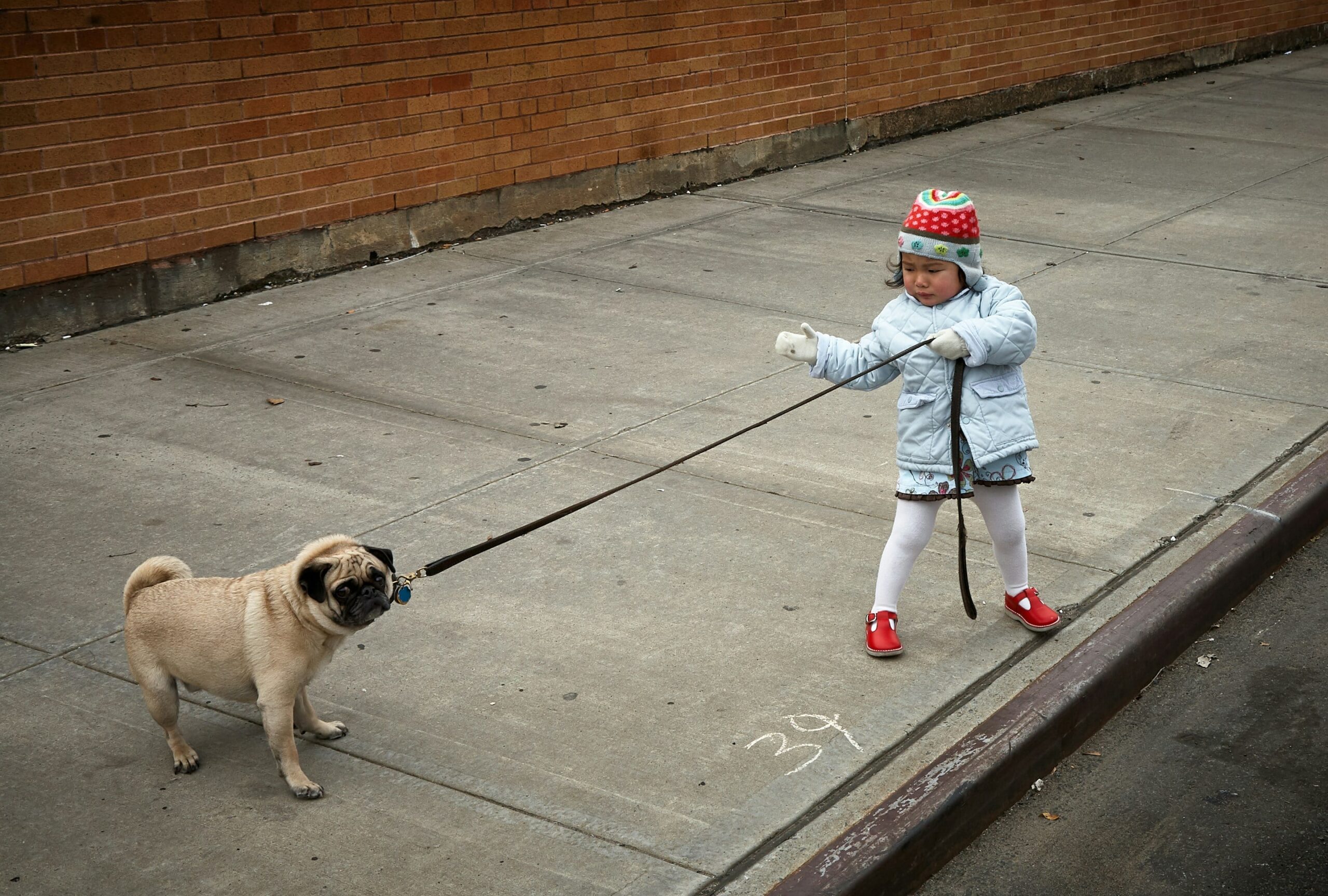Embarking on a daily walk with your canine companion should be a joyous bonding experience, yet the common challenge of leash pulling can turn this outing into a less-than-pleasant struggle.
Leash pulling can turn walks into a tug-of-war.
Fear not, as in this guide, we present 14 indispensable dog walking tips for conquering leash pulling.
These practical insights are designed to empower you in transforming your walks into enjoyable, stress-free activities, all while conquering the persistent issue of leash pulling.
Table of Contents
13 Essential Dog Walking Tips for Conquering Leash Pulling

1] Pre-Walk Exercise
Ensure your walk begins on a positive note by incorporating pre-walk exercises to tire out any excess energy.
Engage your dog in activities like a spirited game of fetch or interactive play.
This not only serves as a physical warm-up but also helps in mental stimulation, reducing the chances of enthusiastic leash pulling during the walk.
2] Choose the Right Leash and Collar
Selecting the appropriate leash and collar combination is crucial for maintaining optimal control during walks.
Consider using a front-clip harness or a head halter, both of which can discourage pulling by redirecting your dog’s attention back to you.
Prioritize tools that ensure comfort for your dog while effectively discouraging excessive pulling behavior.
Tip: “Consider front-clip harnesses or head halters for redirection and comfort.”
3] Practice Loose Leash Walking
Encourage your dog to walk with a loose leash by consistently rewarding good behavior.
Whenever your dog maintains a slack leash and walks calmly by your side, offer treats, praise, or play with toys.
This positive reinforcement creates a strong association between walking calmly and enjoyable rewards, motivating your dog to continue the behavior.
4] Master the Art of Positive Reinforcement
Mastering the art of positive reinforcement is crucial in leash training.
The timing of your rewards is key—offer them immediately when your dog exhibits loose leash walking.
Consistent positive reinforcement not only reinforces the desired behavior but also makes walks a positive and rewarding experience for your dog.
• Master positive reinforcement for leash training success • Timing of rewards is crucial—offer them immediately for loose leash walking • Consistent positive reinforcement reinforces desired behavior • Makes walks a positive and rewarding experience for your dog
5] Employ Stop-and-Go Technique
Teaching patience through the stop-and-go technique is an effective way to discourage pulling.
If your dog starts pulling on the leash, come to a complete stop. Resume walking only when the leash is loose.
This technique helps your dog associate pulling with stopping, encouraging them to walk calmly by your side.
In the rhythm of stops, pulling transforms into a dance of patience
6] Direction Changes
Keep your dog mentally engaged by frequently changing directions during walks.
This keeps them focused on your movements, making them less likely to pull.
The unpredictability of random turns transforms walks into mentally stimulating activities and reinforces your role as the leader.
7] Establish Clear Expectations
Consistency is a cornerstone of successful leash training.
Clearly establish expectations for your dog’s behavior during walks and maintain consistency in enforcing these expectations.
Dogs thrive on routine, making consistent training a powerful tool for overcoming leash pulling and fostering positive walking habits.
Tip: “Enforce rules consistently during walks for effective training.”
8] Use Interactive Toys
Distract your dog from pulling by incorporating interactive toys into your walks.
Bringing a favorite toy along can redirect their attention and turn the walk into an engaging playtime.
Tug toys or treat-dispensing toys provide mental stimulation, reducing the focus on pulling behavior.
9] Shorten the Leash
Keeping the leash short is essential for maintaining better control over your dog’s movements.
A shorter leash minimizes the opportunity for pulling and allows you to guide your dog effectively.
Adjust the leash length based on your surroundings and the level of distraction to maintain optimal control.
Tip: “Adjust the length based on surroundings to guide effectively.”
10] Be Patient
Conquering leash pulling is a gradual process that requires patience.
Celebrate small wins along the way, acknowledging and rewarding moments of improved behavior.
Patience is a powerful tool in reinforcing positive progress and strengthening the bond between you and your dog.
11] Enroll in Obedience Classes
Consider enrolling in obedience classes for professional guidance.
Certified trainers can provide personalized advice, address specific challenges, and offer hands-on assistance to conquer leash pulling effectively.
Obedience classes create a structured learning environment, enhancing the effectiveness of your training efforts.
12] Avoid Retractable Leashes:
Opt for a standard leash instead of a retractable one.
Retractable leashes can encourage pulling and are less effective in maintaining control.
In the simplicity of a standard leash, control takes center stage.
Choosing a fixed-length leash provides better guidance and communication, contributing to a more controlled and focused walking experience.
13] Consult a Professional Behaviorist
If leash pulling persists despite your efforts, seeking the expertise of a professional behaviorist is a wise choice.
A behaviorist can assess your dog’s specific challenges, provide a customized training plan, and address underlying issues contributing to pulling behavior.
Their tailored solutions ensure a comprehensive approach to overcoming leash-related challenges.
Dog Walking Tips for Conquering Leash Pulling: FAQs
How long does it take to conquer leash pulling?
The duration varies, but consistent training efforts can lead to improvement within a few weeks. The timeline depends on your dog’s age, temperament, and previous leash experiences.
Can older dogs overcome leash pulling habits?
Absolutely! Older dogs can learn new habits with patience and consistent training. Tailor your approach to their specific needs, and conquer leash pulling at any age.
Are certain breeds more prone to leash pulling?
Leash pulling is a common behavior across breeds. However, some breeds may be more prone to pulling due to their energy levels or natural instincts. Consistent training is essential for all breeds.
What is the ideal leash length for preventing pulling?
An ideal leash length for preventing pulling is around 4 to 6 feet. This length allows you to maintain control while giving your dog enough freedom to explore.

Conclusion:
In the realm of dog walking, mastering the art of conquering leash pulling is a triumph that elevates routine strolls into moments of true connection.
As you implement and refine the 14 dog walking tips for conquering leash pulling provided in this guide, remember that consistency and patience are your allies.
By adopting positive reinforcement and clear communication strategies, you not only enhance the quality of your daily walks but also forge a stronger bond with your furry friend.
So, step confidently into more pleasant strolls, armed with the knowledge and tools to conquer leash pulling and enjoy the fulfilling experience of walking side by side with your well-behaved, leash-friendly dog.





